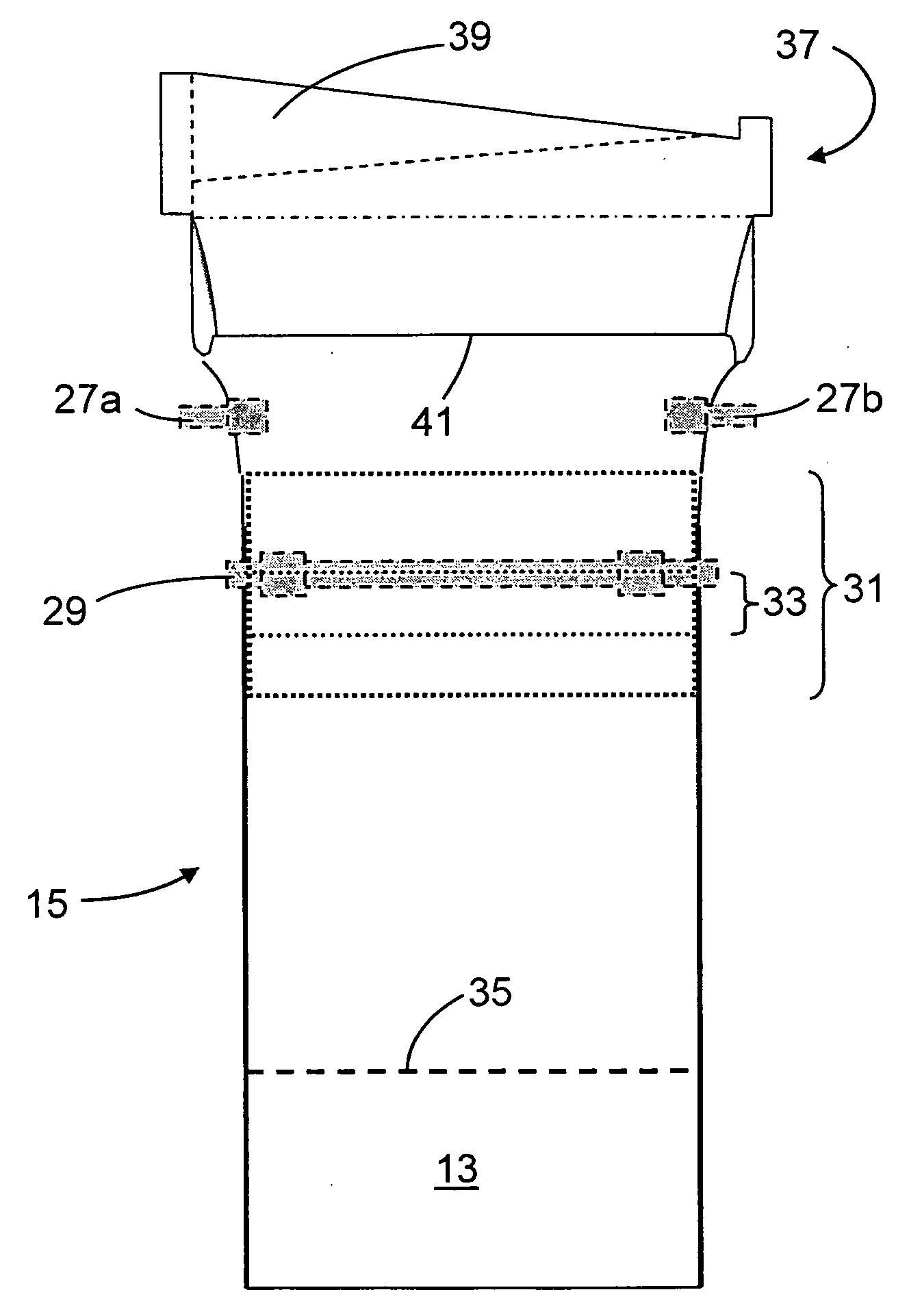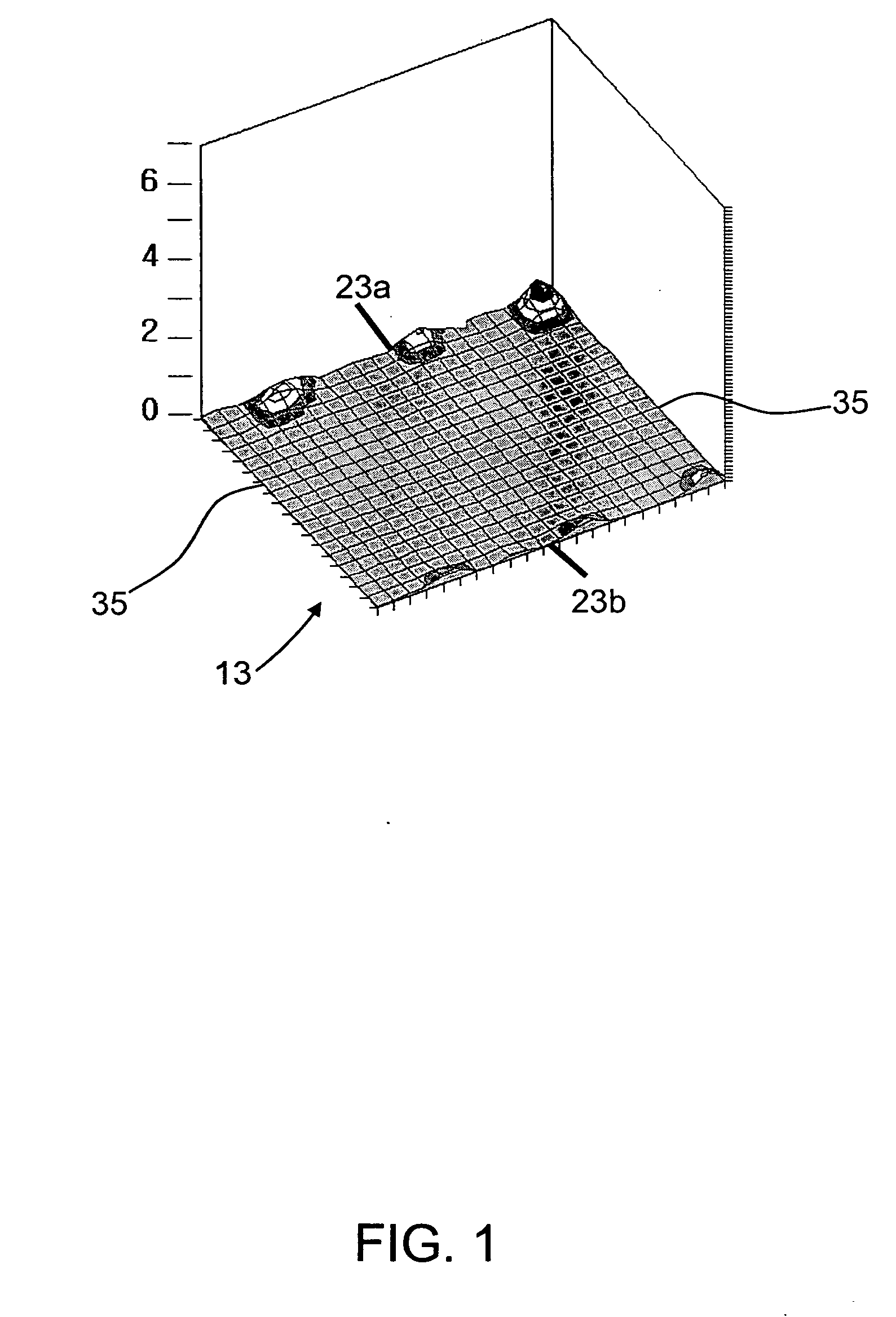Methods of fabricating flat glass with low levels of warp
a flat glass and low level technology, applied in glass rolling apparatus, glass tempering apparatus, manufacturing tools, etc., can solve the problems of distortion in the display panel, one of the most troublesome and persistent problems, warping or ripple in the glass will have deleterious effects on the display quality, etc., to reduce the temperature of the glass, reduce the occurrence of s-warp, and reduce the temperature difference across the widths ws
- Summary
- Abstract
- Description
- Claims
- Application Information
AI Technical Summary
Benefits of technology
Problems solved by technology
Method used
Image
Examples
example
S-Warp Reduction
[0085]FIG. 4 shows a temperature profile in the glass transition temperature range (GTTR) for Corning Incorporated's Code Eagle 2000 glass that has been found to produce glass substrates with low levels of S-warp. More particularly, the temperature profile of FIG. 4 is used in at least the lower temperature portion of the GTTR.
[0086] The figure shows both the temperature profile used to reduce S-warp and the corresponding ribbon thickness. The locations of the bead portions and the S-warp portions of the ribbon are also shown in this figure.
[0087] As can be seen from this figure, the temperature differences across the S-warp portions are each less than 40° C. In practice, keeping the temperature differences across the S-warp portions of the ribbon at this level or less has been found to result in low levels of S-warp, e.g., levels of 250 microns or less, while still allowing sufficient cooling of the ribbon by the edge rollers to permit the drawing of wide ribbons...
PUM
| Property | Measurement | Unit |
|---|---|---|
| temperature | aaaaa | aaaaa |
| temperature | aaaaa | aaaaa |
| temperature | aaaaa | aaaaa |
Abstract
Description
Claims
Application Information
 Login to View More
Login to View More - R&D
- Intellectual Property
- Life Sciences
- Materials
- Tech Scout
- Unparalleled Data Quality
- Higher Quality Content
- 60% Fewer Hallucinations
Browse by: Latest US Patents, China's latest patents, Technical Efficacy Thesaurus, Application Domain, Technology Topic, Popular Technical Reports.
© 2025 PatSnap. All rights reserved.Legal|Privacy policy|Modern Slavery Act Transparency Statement|Sitemap|About US| Contact US: help@patsnap.com



